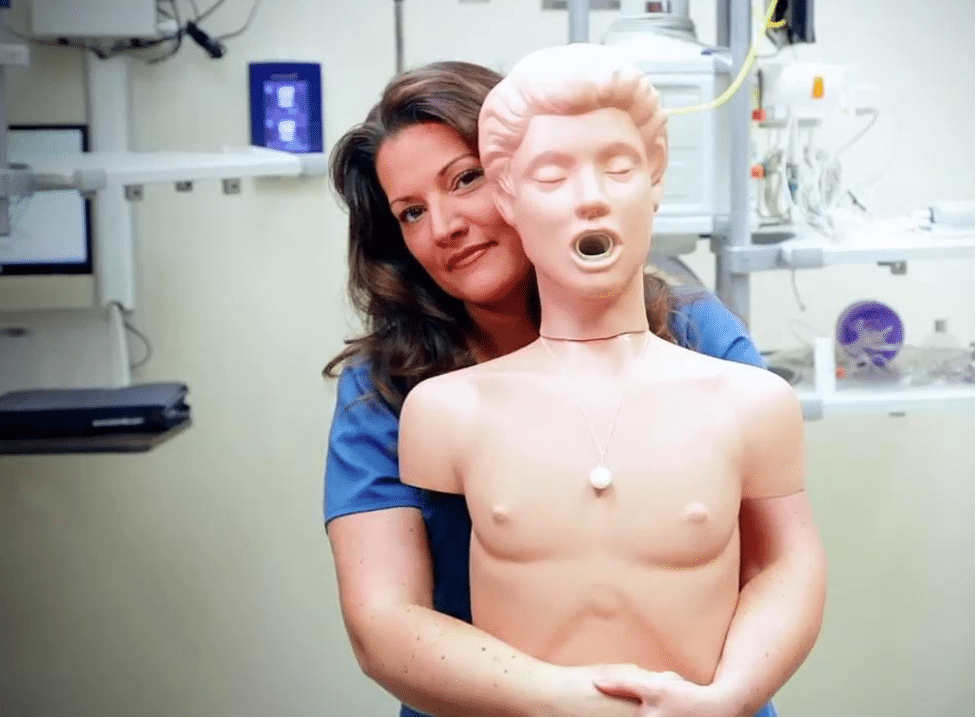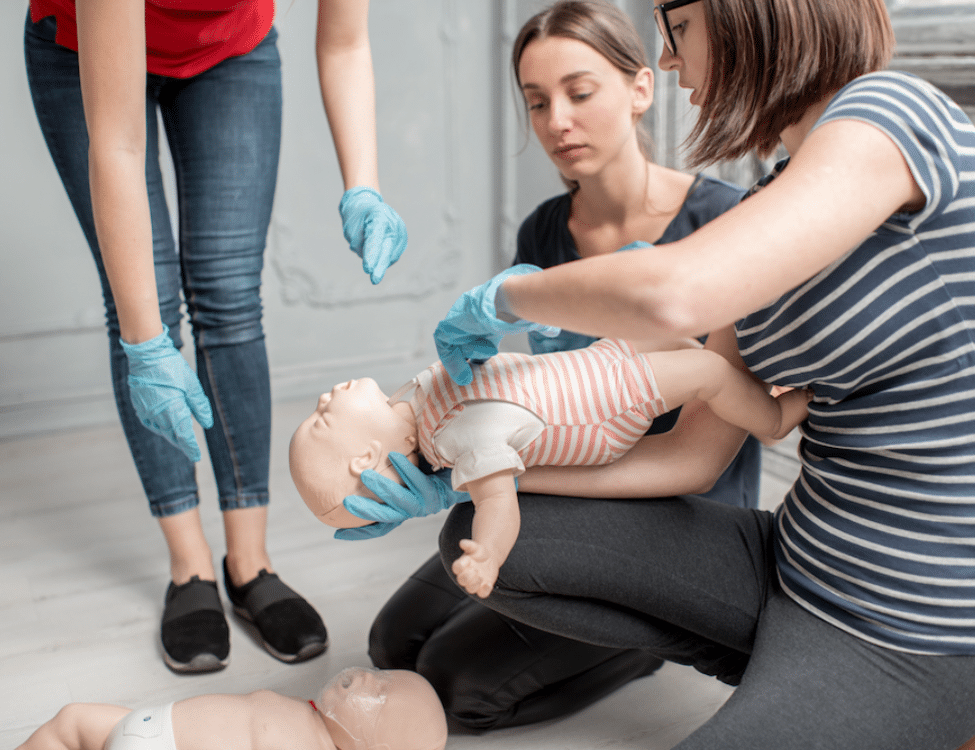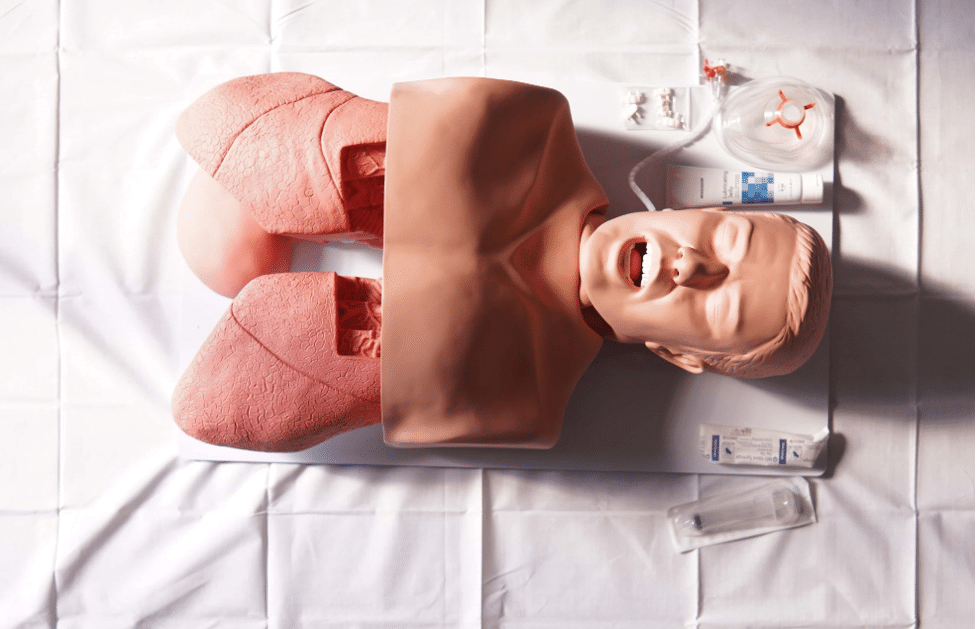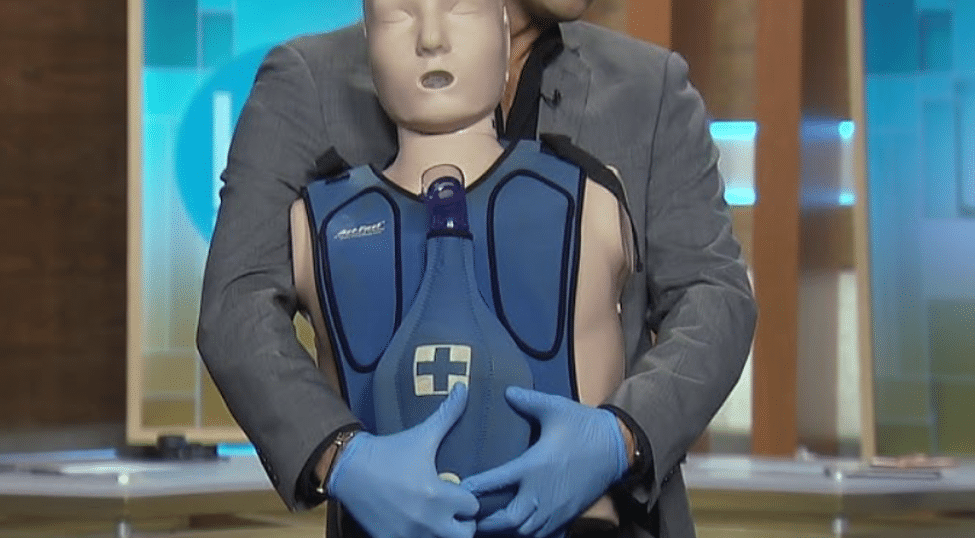While technology continues to revolutionise the world of medicine, some traditional techniques remain essential for anyone involved in emergency medical care. One such technique is the Heimlich Maneuver
The Importance of the Heimlich

The Heimlich Maneuver, also known as the abdominal thrust, is a first-aid method used to relieve upper airway obstruction caused by a foreign object. This vital skill is commonly taught in basic life support and advanced cardiac support programmes.
Choking, a common cause of death, occurs when there is extreme difficulty breathing due to a blocked airway. The severity of choking depends on the level of airway obstruction. In severe cases, no air can enter the lungs, and the brain can only function without oxygen for a few minutes before damage occurs. Prompt action is crucial to prevent brain damage and save the choking victim’s life.
The goal of choking relief is to dislodge and expel the object blocking the airway, allowing the person to breathe again. The Heimlich Maneuver achieves this by delivering strong thrusts under the diaphragm to force the object out of the airway.
Learning and practising the Heimlich Maneuver is essential, and individuals can take classes to ensure they are prepared to act quickly and confidently in an emergency. During these classes, choking manikins are used to allow students to practise the correct techniques. This hands-on practice enhances the effectiveness of the training, ensuring individuals are better prepared to respond to choking emergencies.
A wide variety of choking manikins are available on the market, including models that provide realistic feedback on the force and effectiveness of the students’ techniques. This range of options allows instructors to provide their students with the most effective training possible for this critical skill.
The Anatomy of a Choking Manikin
Featuring a life-size head and torso, a choking simulator works on the principle of clearing an obstructed airway using air generated by performing abdominal thrusts or back blows correctly. With an object stuck in the airway, the student must use anatomical landmarks to determine where to position their hands and how much pressure to apply. If the procedure is performed correctly, the students receive visual confirmation of the expelled object.
Benefits of Choking Manikins

Unparalleled Training
Choking manikins provide unmatched technique training with their accurately replicated anatomy and realistic bodily responses. Using simulated obstructions, the manikin allows instructors to teach and practise this lifesaving skill effectively. Instructors can track and evaluate trainees’ performance, providing guidance and adjustments to ensure the method is performed correctly.
Hands-on Training
Hands-on learning helps students understand the practical aspects of techniques better than theoretical learning alone. This in-depth, hands-on understanding is especially critical for medical training, where students must master procedures before using them on real patients.
Immediate Feedback
Many choking manikins are designed to give immediate feedback, such as expelling an object when the maneuver is performed correctly. This helps trainees understand the correct amount of force and positioning required.
Safety
Using a manikin eliminates the risk of injury to a training partner, making it a safer option for learning and practising the Heimlich Maneuver.
Common Choking Manikins Used in Heimlich Maneuver Training
Simulaids® Adult Choking Manikin

The Simulaids® Adult Choking Manikin is an exceptional training tool designed to provide realistic and effective practice for managing choking emergencies. It includes a torso and head with two foreign objects on a string, simulating a choking scenario. The robust build quality ensures it can withstand repeated use without compromising performance.
The manikin operates on the principle of clearing a blocked airway using forced air generated from abdominal thrusts or back blows. The realistic anatomical features, including the rib cage, xiphoid process, and suprasternal notch, help students accurately locate where to place their hands, enhancing the learning experience.
One of the standout features of this manikin is the visual confirmation of the expelled foreign object when the correct amount of force is applied. This immediate feedback is invaluable for students, helping them understand the effectiveness of their technique and the required pressure, mirroring real-life scenarios.
Simulaids® Choking Manikin – Infant
This manikin allows for realistic practice of infant choking scenarios, including both airway obstruction and appropriate response techniques. It provides a realistic representation of an infant’s anatomy, allowing students to practise the correct technique for performing the Heimlich Maneuver on an infant, which differs significantly from that for adults.
Simulaids® Choking Manikin – Obese
This manikin is designed specifically to address the unique challenges posed by obese individuals who are choking. The manikin’s obese torso and head accurately represent an overweight adult, providing a realistic scenario for trainees. This includes anatomical features such as a hidden rib cage and excess fatty tissue, which are common in obese individuals. It is particularly useful for training on protocols involving pregnant women or older, heavier individuals, who may require different techniques due to their body structure.
Act+Fast Rescue Choking Vest with Back Slap Pad

In addition to manikins, choking vests are another common tool used in choking training. They are versatile tools that can replicate a variety of choking scenarios, including adult or child victims and varying degrees of airway obstruction. This versatility allows students to build skills that can be applied to different age groups and contexts.
Vests are typically equipped with indicators or sensors that provide feedback on the success of the manoeuvre performed. Students can get immediate feedback on the force and position of their thrusts, allowing them to modify and enhance their technique.
To be effective, choose a vest that ensures a realistic simulation. The vest should appropriately represent the resistance and displacement of an obstructed object, such as a piece of food or a foreign object. Additionally, ensure it is made from durable materials that can withstand repeated use and handling, is easy to use, and comes with detailed instructions for assembly, use, and cleaning.
Conclusion
The use of choking manikins in Heimlich Maneuver training is invaluable. These tools provide realistic, hands-on practice, immediate feedback, and a safe learning environment. Whether you are a healthcare professional or a concerned individual looking to be prepared for emergencies, training with choking manikins can equip you with the skills and confidence needed to save lives.
